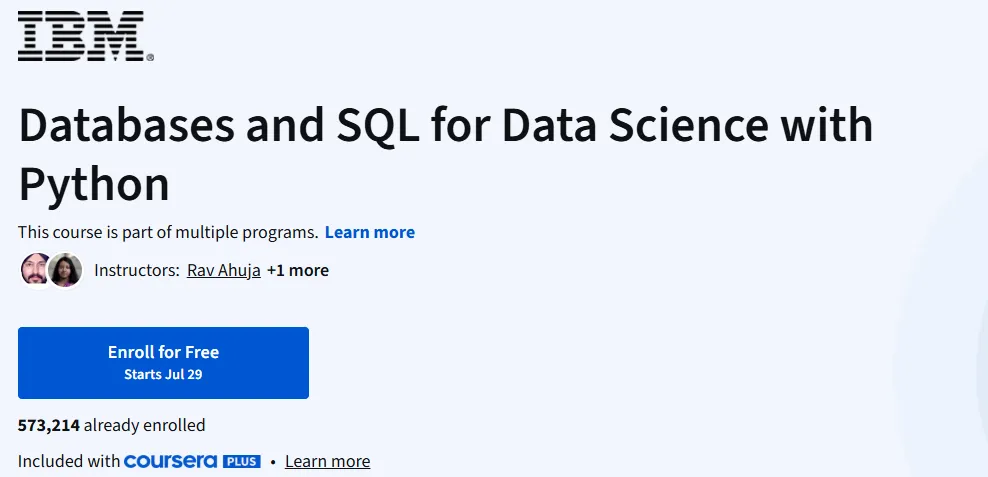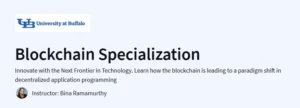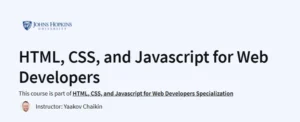Databases and SQL for Data Science with Python
A practical and beginner-friendly course to master SQL and integrate it with Python for real-world data science tasks.
What will you learn in Databases and SQL for Data Science with Python Course
Write basic to advanced SQL queries for data analysis.
Understand relational database concepts, schemas, and joins.
Work with real databases using SQL and Python.
Perform CRUD operations and use SELECT, WHERE, GROUP BY, and JOIN effectively.
Program Overview
Module 1: Introduction to Databases
⏱️ 1 week
Topics: Relational databases, tables, primary keys, ER diagrams
Hands-on: Explore database schemas and concepts through interactive labs
Module 2: Basics of SQL
⏱️ 2 weeks
Topics: SELECT, FROM, WHERE, ORDER BY, LIMIT
Hands-on: Write basic SQL queries and retrieve data
Module 3: Intermediate SQL Queries
⏱️ 2 weeks
Topics: GROUP BY, HAVING, COUNT, SUM, AVG
Hands-on: Perform aggregations, filters, and grouped data analysis
Module 4: Advanced SQL and Joins
⏱️ 2 weeks
Topics: INNER JOIN, LEFT JOIN, sub-queries, nested queries
Hands-on: Combine tables, extract relational insights, write complex queries
Module 5: Accessing Databases with Python
⏱️ 2 weeks
Topics: Using Python libraries like
sqlite3andibm_dbHands-on: Execute SQL queries using Python scripts and notebooks
Module 6: Final Assignment
⏱️ 1 week
Topics: End-to-end database querying with real data
Hands-on: Apply everything in a project-based final task
Get certificate
Job Outlook
SQL remains one of the top required skills in data science and analytics.
Roles like Data Analyst, BI Developer, and Database Administrator rely on SQL.
Median salaries range from $70K–$120K depending on role and experience.
Combining SQL with Python enhances job readiness in data roles.
- No prior experience needed
- Strong hands-on labs and assignments
- Teaches SQL and Python integration
- Doesn’t go deep into database administration
- Some advanced SQL topics (e.g., window functions) not covered
Specification: Databases and SQL for Data Science with Python
|
FAQs
- The course is suitable for beginners, though basic Python familiarity is helpful.
- SQL basics are introduced gradually, making it accessible to newcomers.
- Exercises include step-by-step instructions for both Python and SQL integration.
- Learners can practice independently to reinforce understanding.
- Additional tutorials may accelerate learning for complete beginners.
- The course includes practical exercises on real-world datasets.
- Learners practice writing SQL queries to extract, filter, and manipulate data.
- Python integration allows automation and analysis of database results.
- Guided labs simulate real data science workflows.
- Hands-on experience helps build skills suitable for data analyst or data scientist roles.
- Provides foundational knowledge in databases, SQL, and Python for data handling.
- Skills learned support tasks like data extraction, cleaning, and analysis.
- Completion strengthens applications for internships or junior data science positions.
- Additional learning in statistics or machine learning may complement this course.
- Practical exercises allow learners to showcase applied skills in portfolios.
- SQL is a core skill used across data science, analytics, and business intelligence roles.
- Python integration is widely used for automation, visualization, and analysis.
- Concepts of relational databases and querying are transferable across platforms.
- Exercises simulate workflows commonly encountered in enterprise settings.
- Mastery of these tools provides a strong foundation for advanced data science courses.
- Estimated completion is around 4–6 weeks at a part-time pace.
- Weekly effort of 3–5 hours is sufficient for lectures and hands-on exercises.
- Consistent practice in writing queries and integrating Python reinforces understanding.
- Revisiting exercises or exploring additional datasets may require extra time.
- Regular engagement ensures learners develop both conceptual knowledge and practical skills.





